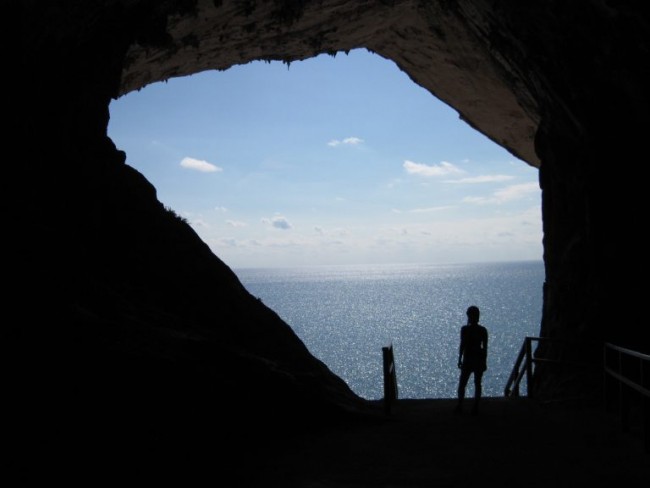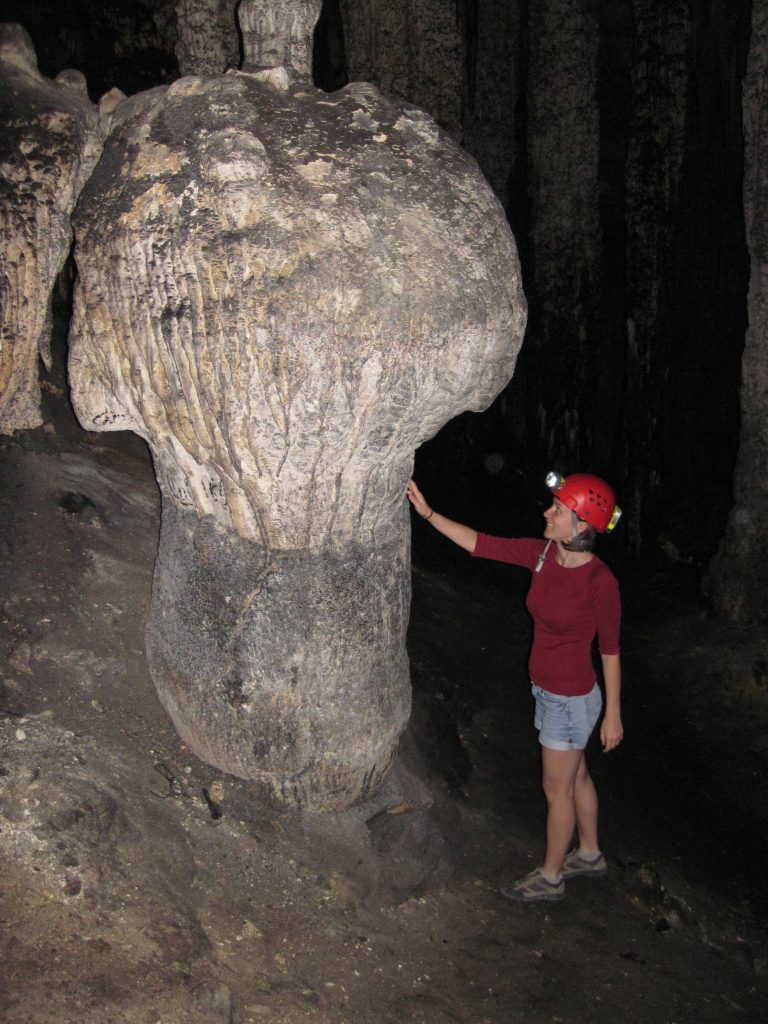Team Deciphers Sea-Level Rise From Last Time Earth’s CO2 Was as High as Today
Earth Institute
Earth Institute | Columbia University
Scientists have discovered evidence in a coastal cave off Spain showing that more than 3 million years ago, when temperatures were roughly equivalent to those projected for the end of this century, sea levels were as much as 16 meters higher than they are now. While levels are not expected to rise that fast by 2100, the findings have significant implications for predicting the pace of near-term and future sea levels amid a warming climate, say the researchers.
The scientists, from the University of South Florida, University of New Mexico, Universitat de les Illes Balears and Columbia University’s Lamont-Doherty Earth Observatory, published their findings in today’s edition of the journal Nature. The analysis of deposits from Artà Cave on the island of Mallorca in the western Mediterranean serves as a target for future studies of ice sheet stability, ice sheet model calibrations and projections of future sea level rise, they said.

“We can use knowledge gained from past warm periods to tune ice-sheet models that are then used to predict future ice-sheet response to current global warming,” said team leader Bogdan Onac of the University of South Florida.
Sea levels rise in part as a result of melting glaciers and ice sheets, including those that cover Greenland and Antarctica. Ice around the world is wasting and already raising sea levels, but, scientists have struggled to predict how things will play out in coming years. Reconstructions of changes in ice sheets and sea levels during past periods when climate was naturally warmer than today can help address the issue, said University of South Florida PhD. student Oana Dumitru, the lead author.
The project focused on cave deposits known as phreatic overgrowths on speleothems. The deposits form in coastal caves at the interface between brackish water and cave air each time the ancient caves are flooded by rising sea levels. In Artà Cave, which lies within 100 meters of the coast, the water table is, and was, coincident with sea levels, say the scientists.
The scientists studied six geologic formations at elevations of 22.5 to 32 meters above present sea level. Careful sampling and laboratory analyses of 70 samples resulted in ages ranging from 4.4 million to 3.3 million years old, indicating that the cave deposits formed during the Pliocene epoch.

Sea level changes at Artà Cave could be caused by the melting or growth of ice sheets, or by uplift or subsidence of land itself, said Jacqueline Austermann, an assistant professor at Lamont-Doherty Earth Observatory and member of the research team. Austermann used numerical and statistical models to analyze how much uplift or subsidence might have happened on Mallorca since the Pliocene, and then subtracted this from the elevation of the formations.
One interval of particular interest during the Pliocene is called the mid Piacenzian Warm Period, which lasted from 3.264 to 3.025 million years ago. At this time, temperatures were 2 to 3 degrees C higher than before humans began altering the atmosphere–a benchmark widely expected to be reached by 2100, unless emissions of the greenhouse gas carbon dioxide are sharply curtailed. This interval also marks the last time atmospheric carbon dioxide was as high as it is today.
The study found that during this period, global mean sea level was as high as 16.2 meters (with an uncertainty range of 5.6 to 19.2 meters) above present. The scientists concluded that this means that even if atmospheric CO2 stabilizes around current levels, the global mean sea level will still likely rise at least that high, if not higher. In fact, it is likely to rise higher, because of the increase in the volume of the oceans due to rising temperature, they said. The authors note that a rise of this magnitude would take hundreds to thousands of years, due to the time it takes for the climate system to react to such high levels of CO2. Considering the present-day melt patterns, this extent of sea level rise would most likely be caused by a collapse of both Greenland and the West Antarctic ice sheets, they say. Previous studies of the mid Piacenzian Warm Period have produced widely varying estimates, ranging from 5 to 40 meters.
The authors also estimated that sea level was 23.5 meters higher than present about 4 million years ago, during a time known as the Pliocene Climatic Optimum, when global mean temperatures were up to 4 degrees C higher than pre-industrial levels.
The research team also included Victor Polyak and Yemane Asmerom of the University of New Mexico at Albuquerque; and Joan Fornós, Joaquín Ginés and Angel Ginés of the Universitat de les Illes Balears in Mallorca. The research was funded by the U.S. National Science Foundation and the Spanish State Research Agency. Support for Austermann was provided by the Vetlesen Foundation.
This story was adapted from a press release by the University of South Florida.
